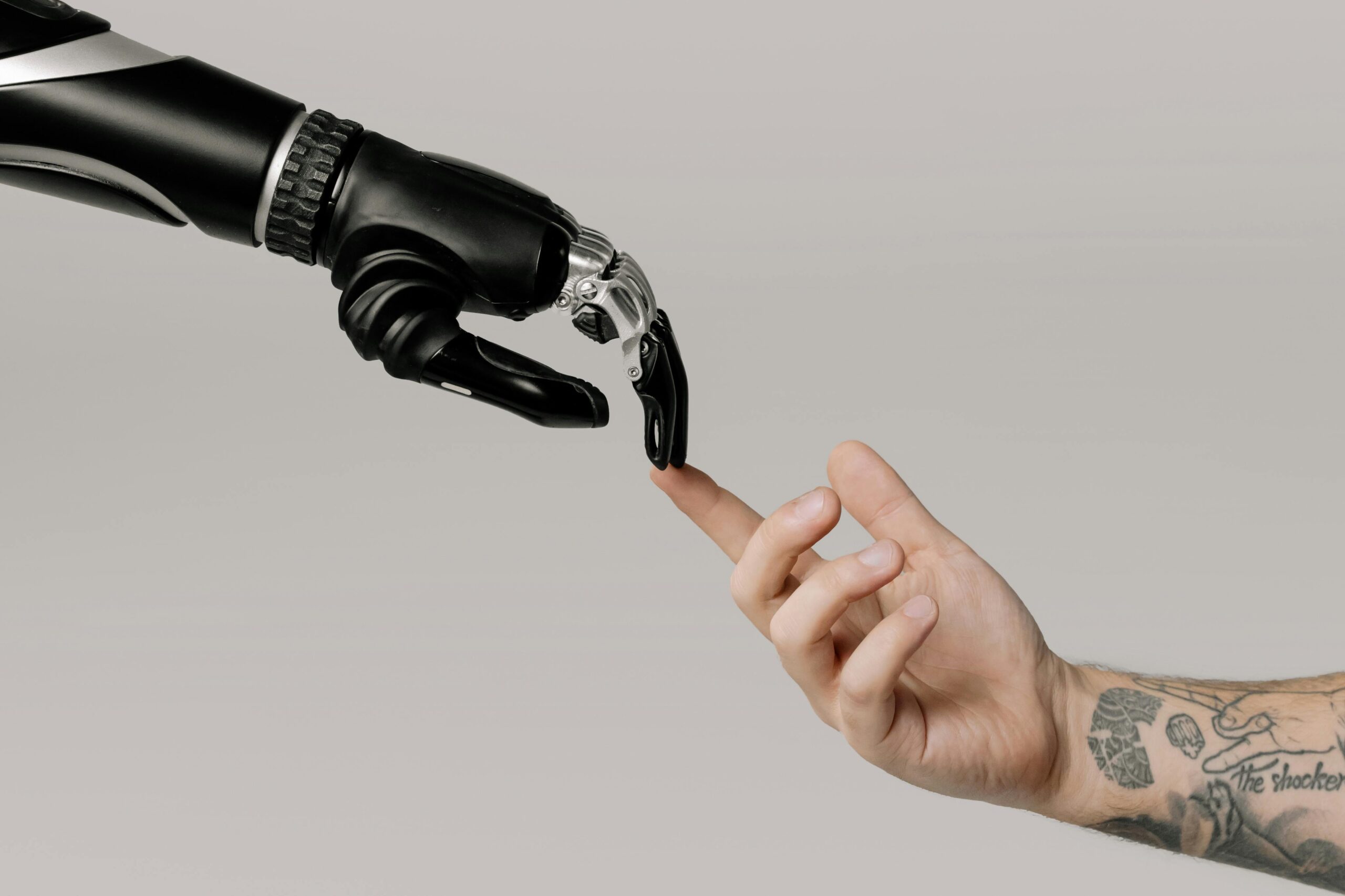How to Compete With AI and Reinvent Your Remote Job in 2025
Contents: What You’ll Learn
“I Thought I Was Too Late to Pivot”
Rachel from Toronto had worked in customer support for over a decade. But by late 2024, her inbox started filling with AI-generated ticket suggestions—and her role started feeling increasingly redundant. “I thought I was too late to pivot,” she recalls. “But now I’m doing better than ever.”
Her turning point came when she realized the question wasn’t “Will AI replace me?” but rather, “What value can I bring that AI can’t?”
In 2025, that question matters more than ever.
🚀 FlexJobs Subscription
Curated remote job board with premium listings.
30% off for RWC readers – $29.95.
Get This Deal
🚀 Avast Premium Security
Security suite to keep your remote work devices protected.
Save up to 40% today – $39.99.
Get This Deal
🚀 NordVPN Subscription
VPN for secure remote work connections and privacy.
Up to 63% off annual plans – $59.88.
Get This Deal
AI is expected to replace or radically transform over 92 million jobs globally by 2030, according to a World Economic Forum report. But not all roles face the same risks—and not all workers are equally prepared.
TL;DR: You Don’t Need to Beat AI — You Need to Work With It
The remote workers who thrive in 2025 won’t ignore automation—they’ll leverage it, reshape their roles, and double down on skills AI can’t mimic.
👉 Download Rachel’s 2025 Reinvention Roadmap for a step-by-step strategy to reskill with confidence.
Why Your Remote Job Feels at Risk (Even If It Isn’t)
If you’re in customer service, writing, HR, or admin—AI is probably already part of your tool stack.
According to Business Insider, some execs argue that upskilling everyone isn’t the answer. Instead, success lies in rethinking roles—and focusing where human creativity, leadership, and empathy still dominate.
“The jobs that remain are going to be fundamentally different—not gone, but evolved,” said Jason Noel, senior EY consultant.
Step 1: Reframe the Fear — AI Is Your Co-Pilot
Think of AI as a force multiplier. It can summarize documents, automate reports, and triage emails—but it can’t:
- Build relationships
- Handle nuance
- Lead with empathy
According to Lifewire, top irreplaceable skills include:
- Leadership
- Adaptability
- Systems thinking
- Ethical judgment
Step 2: Audit and Upgrade Your Role
Use this audit table:
| AI-Friendly Tasks | Human-First Skills |
|---|---|
| Data entry | Stakeholder communication |
| FAQ ticket handling | Customer journey design |
| Email triage | Empathy in conflict resolution |
Rachel didn’t “reskill” from scratch. She automated repeat work using Notion AI, then reinvested time into human-driven tasks. She also upskilled through Educative and Edureka to sharpen her onboarding and strategy skills.
“Once I saw what AI could handle, I realized where I could shine.”
Re-Skill with Strategy — Not Panic
If you’re Rachel—or feel like her—you’re not looking for another 12-month bootcamp or a random Udemy binge. You want clarity. A roadmap. A way to pivot without starting from scratch.
That’s exactly what this part delivers.
Step 3: Build a Personalized Skill Map
What should you actually learn in 2025 to stay employable?
Let’s keep it simple. Your goal isn’t to become an AI engineer (unless you want to). Your goal is to become someone who uses AI better than the next applicant.
Use this 3-tier Skill Map to figure out where to focus:
🟢 Tier 1: Tools You Can Learn in a Weekend
- Notion AI – Summarizing and writing assistants for internal comms
- Zapier – Automating repetitive tasks
- GrammarlyGO – Smart editing for professional writing
- ChatGPT / Claude.ai – Prompting for idea generation, strategy, and support
📍 Rachel’s tip: Learn how to “prompt stack” — that’s where tools like Educative shine, with short courses built for practical use cases.
Don’t underestimate these “weekend tools.” They become the foundation for much bigger transformations. Mastery of these means you can create entire workflows with AI—something that immediately boosts your value on a remote team.
🟡 Tier 2: Skills You Build in 30–60 Days
- Workflow automation – Build systems that combine multiple tools
- Data interpretation – Know how to use AI insights, not just read them
- Content ops – From SEO to repurposing using AI
👉 Learn this using Edureka’s AI-for-marketing or business analyst tracks. You don’t need to write code—but you do need to understand what AI can automate and how it affects outcomes.
These skills also create lateral movement. Rachel took content ops training and moved into a hybrid role that combines marketing with onboarding—something she never expected to enjoy, but now thrives in.
🔴 Tier 3: Mindsets That Future-Proof Careers
- Systems thinking – How everything connects
- Strategic communication – Making human-centric decisions
- Emotional resilience – Staying confident in tech-driven chaos
Mindsets don’t show up on résumés. But they do show up in interviews, promotions, and team dynamics. Rachel credits her success to building not just her tech stack—but her confidence and adaptability. That’s what makes her irreplaceable.
These aren’t static categories either. They overlap and evolve. By combining Tier 1 execution, Tier 2 literacy, and Tier 3 mindset, you build a future-proof career—not just a job.

Tool Spotlight: Edureka vs. Educative
| Feature | Educative | Edureka |
|---|---|---|
| Best For | Fast-track skill acquisition | Structured career pivots |
| Learning Style | Interactive code and business walkthroughs | Live instructor-led sessions |
| Persona Match | Rachel (self-paced learners) | Rachel + Liam (career switchers) |
| Use Case Example | “Learn Zapier in a Weekend” course bundle | “AI for Non-Tech Roles” certification track |
| CTA | 👉 Start with Educative here | 👉 Explore Edureka courses here |
Pro tip: Pair them. Many of Rachel’s peers start with Educative for on-demand clarity, then level up with Edureka to cement their transition with instructor-led structure.
Step 4: Reinvent Your Role — Without Changing Jobs
Not every pivot means quitting. Many of Rachel’s peers reinvented their remote jobs inside their current companies.
Ask yourself:
- What is your manager already using AI for?
- What tasks get pushed off because they’re too “messy”?
- Where do people still come to you for advice or guidance?
The answers tell you where you’re irreplaceable.
“I asked to shadow a colleague in onboarding. Turns out, my customer insights made me perfect for that team,” Rachel shares. “I didn’t upskill away from support—I evolved beyond it.”
This type of evolution is what AI can’t predict—and what hiring managers increasingly crave: initiative, agility, and intentionality.
In 2025, roles won’t be replaced. They’ll be refactored. And those who lead that refactoring? They’ll write their own job descriptions.
Ready for Real Change?
Re-skilling isn’t about chasing trends. It’s about matching your natural strengths with tools that make you future-proof.
Start small. Stay strategic. And make AI work for you.
👉 Download Rachel’s 2025 Reinvention Roadmap
Get a skill checklist, a 30-day learning plan, and exclusive access to our curated lead magnet tools.
Part 3: Reinvention in Action — From AI Assistant to Career Architect
You’ve reframed the fear. You’ve mapped the skills. You’ve seen how Rachel and others pivoted inside their roles. Now it’s time to operationalize the reinvention.
This is where automation meets agency—where your AI tools become extensions of your thought leadership, not just task-bots.
Step 5: Design an AI-Augmented Work Routine
This doesn’t mean outsourcing everything to robots. It means intentionally deciding:
- What you automate
- What you delegate
- What you elevate
Here’s how Rachel structured her new remote routine using AI:
| Task Category | Tool Used | Why It Works |
|---|---|---|
| Inbox triage | Notion AI, Gmail filters | Focuses energy on strategic convos |
| Knowledge capture | ChatGPT, Loom | Speeds up SOP creation + async updates |
| Weekly reporting | Zapier → Google Sheets | Zero manual data copy-paste |
| Brainstorming | Claude.ai, Notion AI | Fast ideation and prioritization |
Rachel spends 70% less time on busywork—and 3x more on stakeholder strategy and onboarding design.
This isn’t about working more. It’s about doing fewer things, better.
Step 6: Create Your Internal “AI Value Map”
Want job security in 2025? Become the one who makes AI useful for your team.
Map your role like this:
🧩 Phase 1: Identify What Slows the Team Down
Ask: What tasks are repetitive, time-wasting, or drop-prone?
🛠️ Phase 2: Prototype an AI Workflow
Use tools from your Tier 1 skill map. Build a Zap. Draft a prompt library. Record a walkthrough with Loom.
📈 Phase 3: Document the Time Saved + Result
Show before/after. Rachel’s example: “Reduced onboarding feedback loop from 5 days to 2.”
🗣️ Phase 4: Present as a Team Asset
Don’t gatekeep. Offer your workflow to peers. Train others. This turns you from an employee into a strategic enabler.
Future-Proof Your Skills Now
You don’t need a bootcamp. You don’t need to become a coder. You need to:
- Understand your strengths
- Pick the right tools
- Frame your AI fluency as value to others
“I thought I needed to outwork the robots,” Rachel said. “Turns out, I just needed to outlearn my own assumptions.”
Now she earns more. Works less. Leads strategy. And trains others on what she once feared.
You’re not behind. You’re right on time.
👉 Download Rachel’s 2025 Reinvention Roadmap — Includes:
- Full skill tier checklist
- AI use-case worksheet
- Personal value map template
Scroll Recap: Your AI-Resistant Career Framework
| Section | What You’ll Learn |
| Part 1 | Reframe AI anxiety, audit current role |
| Part 2 | Build skill stack, compare tools (Edureka + Educative) |
| Part 3 | Operationalize AI in your role, drive team value |
Bonus Tools to Explore
- Educative — micro-certifications in automation, workflow design
- Edureka — instructor-led AI-for-operations tracks
- The Ladders — high-paying remote job listings with AI-era filters
Want More?
Join Rachel and thousands of others in the Remote Reinvention Circle—a free 30-day challenge to:
- Map your own AI routine
- Build a use-case portfolio
- Get feedback from real mentors
Must reads:
- Are Remote Workers Safe from AI?
- What Skills Will AI Never Replace in Remote Work?
- Should I Panic About AI Taking My Job?
Frequently Ask Questions:
What jobs will AI not replace in 2025 for remote workers?
Remote roles that require empathy, strategic thinking, complex decision-making, or stakeholder communication remain resilient in 2025.
Can I still pivot into a tech-forward role without learning to code?
Yes. Many roles now value AI fluency over coding—skills like automation setup, prompt design, and workflow optimization are in high demand.
What is the best way to learn AI tools quickly for remote work?
How do I reinvent my remote job without quitting?
Audit your tasks, automate the repetitive ones with AI, and reframe your value around strategic or human-first skills—then pitch a redefined role internally.
Is it too late to pivot if I’m over 40 and in a non-tech field?
No. Remote workers over 40 are using AI tools to amplify experience and transition into roles like operations strategy, onboarding design, or digital leadership.







